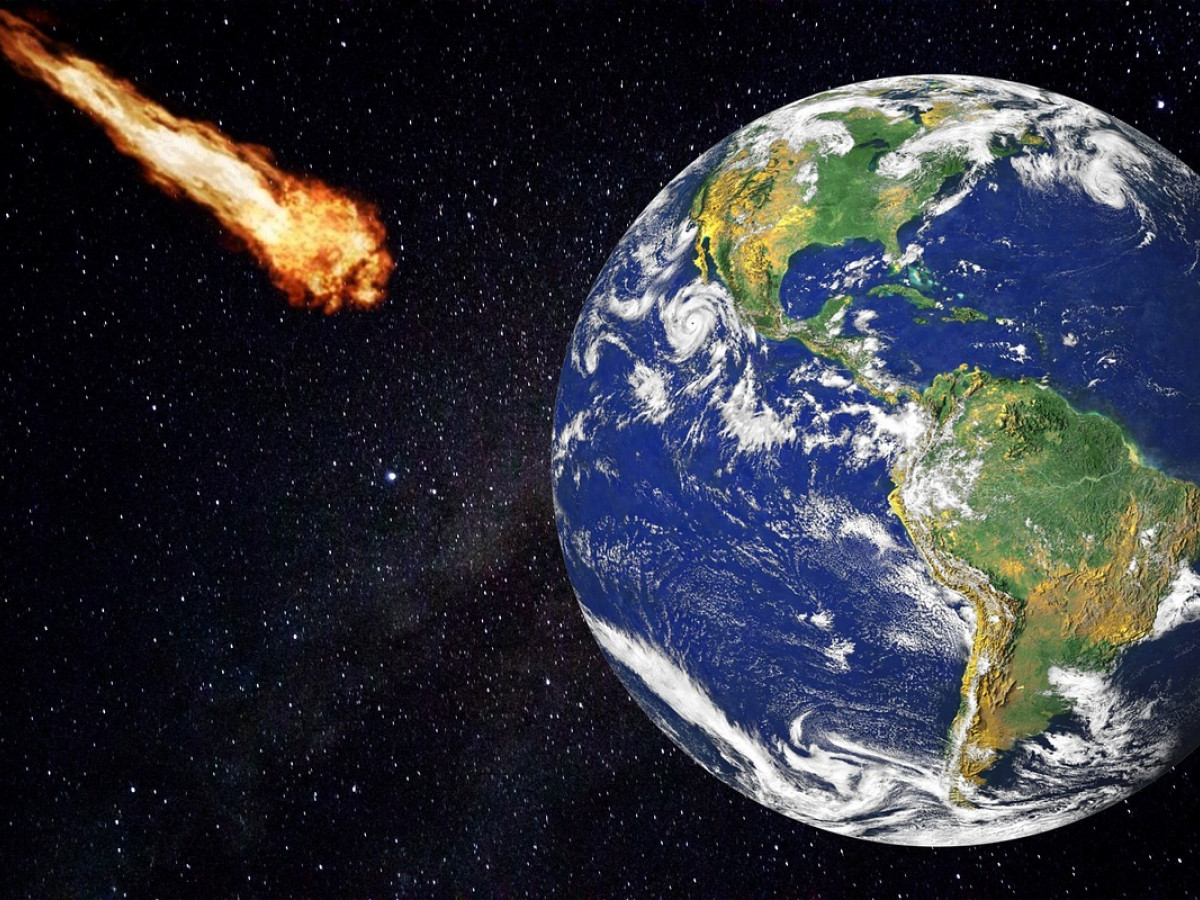But first, you probably won’t have noticed – but dozens of asteroids have flown past Earth since the start of the year, a silent reminder of the constant cosmic traffic in our solar neighbourhood. NASA has been paying particularly close attention to a plane-sized asteroid which has been speeding by at almost 14,000 miles per hour. While it poses no immediate danger, it made its closest approach at just over 4 million miles from Earth. In astronomical terms, that’s pretty close. Sara Russell is a planetary scientist at the Natural History Museum in London, and a leading expert on asteroids and meteorites…
Sara – There are several asteroids at any one time that are approaching the Earth or near the Earth. This one, 2025 OW, was of particular interest because it came quite close to the Earth, just outside the distance between the Earth and the Moon. But these sorts of things are quite common, and the reason they’re in the news a bit more now is because the space agencies are really getting on top of it. So, obviously, a massive asteroid hitting the Earth is potentially a mortal threat to us here, but it’s fairly straightforward to have campaigns observing asteroids to make sure that we know where all the potentially hazardous asteroids are in the Solar System and to monitor their orbits closely so that we can assess the risk.
James – So the ones as big as we’re talking about, the size of a plane, if they were to hurtle into our planet, depending on where they hit I suppose, that has the potential to cause quite widespread devastation?
Sara – Yes, something the size of, say, 50 metres across would cause a huge amount of devastation. That’s about the size of the one that fell in Siberia a hundred years ago, called Tunguska, and it actually flattened trees over hundreds of square miles, and the glow from the impact could be seen even from Western Europe. Luckily, that area was uninhabited, but you can imagine if that fell on an inhabited area, it would be absolutely catastrophic. So that’s exactly the sort of event that we want to mitigate by keeping a close eye on the skies.
James – All the while though, I think I’m right in saying there are lots of Near-Earth Objects, a lot smaller than that, that are more commonly falling to Earth than people might realise.
Sara – Yes, that’s right. There’s extraterrestrial material falling to Earth all the time and, in fact, the Earth is growing by tens of thousands of tonnes every year because we’re continuously experiencing this stream of material. Most of it is in the form of dust and it just hits the atmosphere and doesn’t harm anyone or anything. If you see a shooting star in the sky, that is a tiny grain-sized piece of extraterrestrial material entering the Earth’s atmosphere very regularly. We also get slightly bigger objects that actually make it to the ground as meteorites, and that’s actually my favourite sort of thing because I study meteorites as my job at the Natural History Museum. So it’s a fantastic resource.
James – I was going to say, for most people the thought of these near-Earth objects falling onto Earth’s surface is the stuff of nightmares, whereas for you it’s like Christmas.
Sara – It totally is. What I love about meteorites is that most of them are fragments of asteroids and they formed at the same time that the Sun and the planets formed, four and a half billion years ago. So they are fossilised relics from that time and they can tell us how the planet formation processes happened. Some fragments of asteroids, and a few rare meteorites that come to Earth, are fragments of the Moon or from Mars, so they can also tell us about our neighbouring planets and our Moon as well.
James – We know, having spoken to you here on the programme before, that you’re particularly involved with the asteroid Bennu and the samples the OSIRIS-REx mission managed to retrieve for you to study. I wonder if you could tell us a bit more about what those samples are revealing. I mean, we spoke to you last time and we talked about salts and amino acids, so is there anything more to update us on?
Sara – We’re still looking at Bennu. The science team is working for another year on the samples and we’re still discovering loads of things. For us, the salts were fantastic to find because that’s the kind of thing we don’t really see in meteorites that come to Earth naturally. We really had to have a space mission collect a piece of the asteroid and bring it back to Earth, keeping it pristine, because these salts are very easily dissolved away in the humid atmosphere. Likewise, it was great to be able to look at the organic material in this completely uncontaminated sample, because most meteorites become contaminated very quickly when they come to Earth. We’re still working on it at the moment. The work I’m doing is looking at grains that predate the asteroid’s accretion – little dust grains that were floating around four and a half billion years ago in our solar system – and they can give us clues as to the exact part of the Solar System that Bennu formed in. We’re finding that Bennu probably formed quite far out in our Solar System, maybe beyond Jupiter, and so it has moved a lot in its history to end up in the near-Earth region where it is today.

